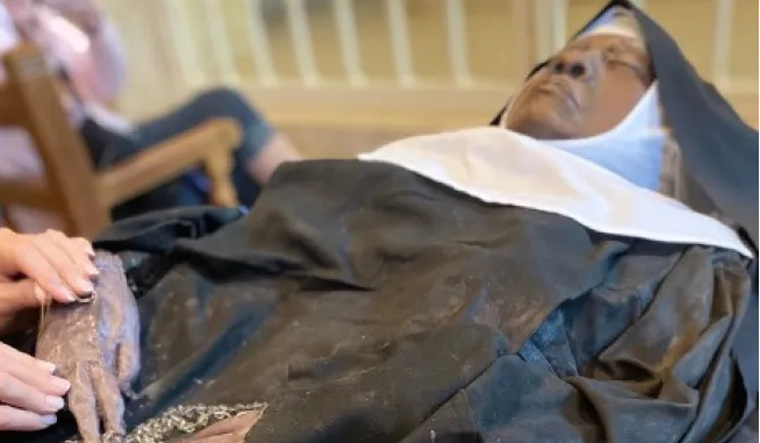Inmates of a monastery in rural Missouri town of Gower, in the US, were surprised to find that exhumed body of a deceased nun had no signs of decomposition.
Wilhelmina Lancaster, the founder of Benedictine Sisters of Mary, Queen of the Apostles, had died four years ago, on May 2019 at the age of 95.
According to media reports, a few days ago, the nuns wanted to dig up the coffin of Lancaster to shift it to the altar in the chapel inside the convent, as is the custom.
The nuns who were expecting to find just bones in the coffin were in for a surprise as they saw that the body hasn't decomposed. The body was not embalmed during the burial.
The body of the deceased nun was covered in a layer of mold.
As the news spread, people began flocking to the nunnery, with many calling it the 'miracle of Missouri', and Lancaster a 'saint' as the Catholic church believes that a non-decomposed body is a sign of holiness. A sign next to the body reads: "Please be gentle with touching sister's body, especially her feet."
The body will be on display till May 29 after which it will be moved to the chapel.
While the nuns called it "a testament to her love for the sisterhood", Nicholas Passalacqua, director of forensic anthropology at Western Carolina University, told Mirror.UK that the body may have been preserved due to the temperature, the environment the body is in, and if it was chemically treated.
"The warmer it is, the more active bacteria and enzymes will be and also the more active insect scavengers will be because their metabolisms are correlated to the ambient temperature," he was quoted as saying.
The burial environment and method play a key role in the speed of decomposition of the body.
"If the body is in an oxygen-deprived environment, then this will significantly slow decomposition," Passalacqua said.
"They were very well preserved for thousands of years because they were in environments with low oxygen that restricted bacterial growth and access of the remains to scavengers," Newsweek quoted him as saying.


